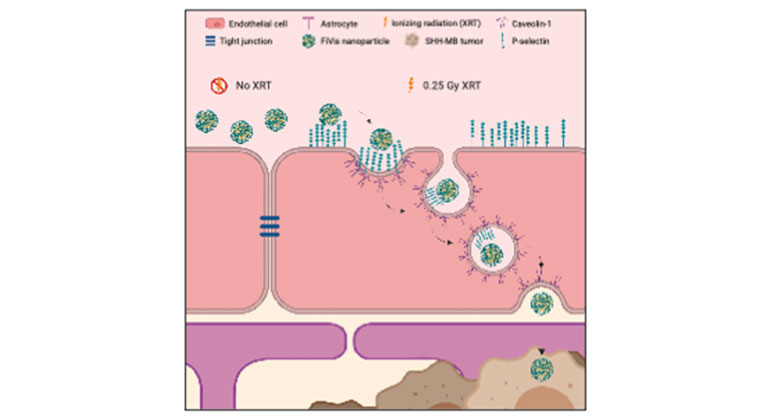Mount Sinai-Led Study Finds Prenatal Exposure to Certain Manmade Chemicals Negatively Affects Childhood Neurodevelopment
A recent collaborative study links higher prenatal exposure to phthalates — manmade chemicals that interfere with hormonal messaging — to behavioral problems in children.
A new study led by Mount Sinai researchers in collaboration with scientists from Cornell University and the U.S. Centers for Disease Control and Prevention, has found higher prenatal exposure to phthalates—manmade chemicals that interfere with hormonal messaging—to be connected with disruptive and problem behaviors in children between the ages of 4 and 9 years. The study, which is the first to examine the effects of prenatal phthalate exposure on child neurobehavioral development, will be published January 28, on the Environmental Health Perspectives website.
"There is increasing evidence that phthalate exposure is harmful to children at all stages of development," said Stephanie Engel, PhD, lead study author and Associate Professor of Preventive Medicine at Mount Sinai School of Medicine. "We found a striking pattern of associations between low molecular weight phthalates – which are commonly found in personal care products – and disruptive childhood behaviors, such as aggressiveness and other conduct issues, and problems with attention. These same behavioral problems are commonly found in children diagnosed with Attention-Deficit Hyperactivity Disorder (ADHD), Oppositional Defiant Disorder, or Conduct Disorder."
Phthalates are part of a group of chemicals known as endocrine disruptors, that interfere with the body's endocrine, or hormone system. They are a family of compounds found in a wide range of consumer products such as nail polishes, to increase their durability and reduce chips, and in cosmetics, perfumes, lotions and shampoos, to carry fragrance. Other phthalates are used to increase the flexibility and durability of plastics such as PVC, or included as coatings on medications or nutritional supplements to make them timed-release.
"Recently, the government instituted regulations limiting certain phthalates in things like child care articles or toys that a young child might put in their mouth," continued Dr. Engel. "But it’s their mother’s contact with phthalate-containing products that causes prenatal exposure. The phthalates that we found most strongly related to neurodevelopment were those commonly found in cosmetics, perfumes, lotions and shampoos. Current US regulations do not address these kinds of phthalates."
For the study, phthalate metabolite levels were analyzed in prenatal urine samples of a multiethnic group of 404 women who were pregnant for the first time. The women were invited to participate in follow-up interviews when their children were between the ages of 4 and 9. The mothers were not informed of their phthalate metabolite levels and the researchers were unaware of their exposures when testing the children.
About The Mount Sinai Medical Center
The Mount Sinai Medical Center encompasses both The Mount Sinai Hospital and Mount Sinai School of Medicine. Established in 1968, Mount Sinai School of Medicine is one of few medical schools embedded in a hospital in the United States. It has more than 3,400 faculty in 32 departments and 15 institutes, and ranks among the top 20 medical schools both in National Institute of Health funding and by U.S. News & World Report. The school received the 2009 Spencer Foreman Award for Outstanding Community Service from the Association of American Medical Colleges.
The Mount Sinai Hospital, founded in 1852, is a 1,171-bed tertiary- and quaternary-care teaching facility and one of the nation’s oldest, largest and most-respected voluntary hospitals. In 2009, U.S. News & World Report ranked The Mount Sinai Hospital among the nation’s top 20 hospitals based on reputation, patient safety, and other patient-care factors. Nearly 60,000 people were treated at Mount Sinai as inpatients last year, and approximately 530,000 outpatient visits took place.
For more information, visit www.mountsinai.org.
About the Mount Sinai Health System
Mount Sinai Health System is one of the largest academic medical systems in the New York metro area, with 48,000 employees working across seven hospitals, more than 400 outpatient practices, more than 600 research and clinical labs, a school of nursing, and a leading school of medicine and graduate education. Mount Sinai advances health for all people, everywhere, by taking on the most complex health care challenges of our time—discovering and applying new scientific learning and knowledge; developing safer, more effective treatments; educating the next generation of medical leaders and innovators; and supporting local communities by delivering high-quality care to all who need it.
Through the integration of its hospitals, labs, and schools, Mount Sinai offers comprehensive health care solutions from birth through geriatrics, leveraging innovative approaches such as artificial intelligence and informatics while keeping patients’ medical and emotional needs at the center of all treatment. The Health System includes approximately 9,000 primary and specialty care physicians and 10 free-standing joint-venture centers throughout the five boroughs of New York City, Westchester, Long Island, and Florida. Hospitals within the System are consistently ranked by Newsweek’s® “The World’s Best Smart Hospitals, Best in State Hospitals, World Best Hospitals and Best Specialty Hospitals” and by U.S. News & World Report's® “Best Hospitals” and “Best Children’s Hospitals.” The Mount Sinai Hospital is on the U.S. News & World Report® “Best Hospitals” Honor Roll for 2025-2026.
For more information, visit https://www.mountsinai.org or find Mount Sinai on Facebook, Instagram, LinkedIn, X, and YouTube.

Scientists Develop Novel Approach to Enhance Drug Delivery for Brain Tumors in Children
Mar 02, 2023 View All Press Releases
Mount Sinai Opens The Charles Lazarus Children’s Abilities Center
Oct 04, 2021 View All Press ReleasesMount Sinai Begins Recruitment for Landmark Study of Adolescent Brain Development
Sep 13, 2016 View All Press Releases